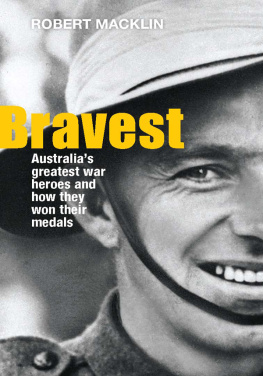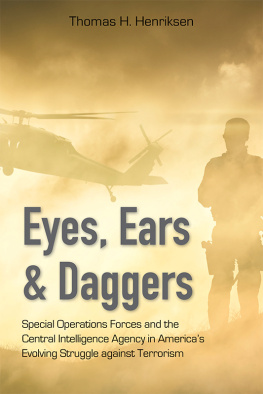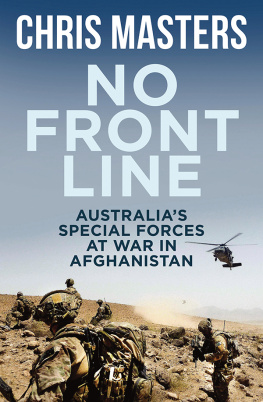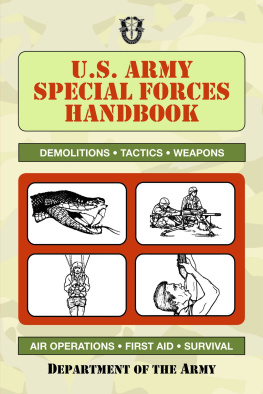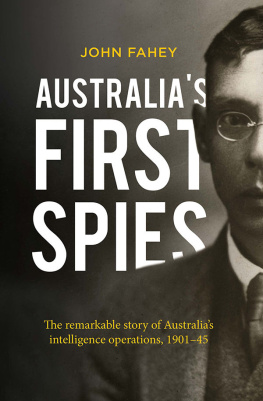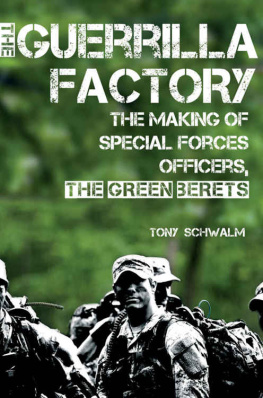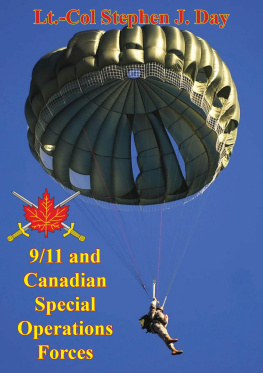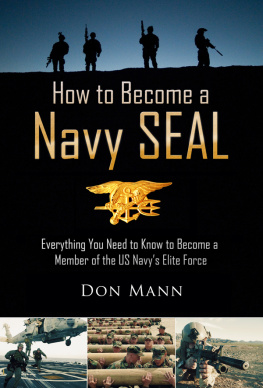

For Ben Macklin
Contents
The centurion in the infantry is chosen for his size, strength and dexterity in throwing his missile weapons and for his skill in the use of his sword and shield; in short for his expertness in all the exercises. He is to be vigilant, temperate, active and readier to execute the orders he receives than to talk.
Vegetius, De Re Militari , II, 14
By Peter Jennings
Director, Australian Strategic Policy Institute
My first encounter with Australias Special Forces came when I was a young adviser to Alexander Downer, who in 1991 was shadow minister for defence. We visited the Campbell Barracks of the Special Air Service Regiment (SASR) in Perth to view the Killing House, where soldiers practise hunting terrorists and rescuing hostages. We were taken to a room where half a dozen shop dummies dressed in fatigues guarded live hostages SASR troopers. Our confident guide a major, from memory said to Downer and me, Dont move, and whatever you do stay behind that white line on the floor. While he spoke he put his arms around the shoulders of two manikins as if they were about to pack down into a scrum.
The room suddenly went dark and in that instant two flash-bang stun grenades exploded, disorienting us with intense light and noise. Our SASR rescuers pounded into the room shining torches in our faces before, in seconds, double-tapping the dummies with two rounds to each forehead. With the hostages rescued, to everyones surprise Downer seemed to break out in an impromptu foot-stomping dance. A white-hot flash-bang casing had rolled over the safety line and adhered to the rubber sole of Alexanders shoe. As his shoe got hotter, Downer danced harder until he dislodged the round, leaving a deep groove melted into the sole.
The early 1990s was a time with few opportunities for the SASR to use their training in combat, but in 1998 Prime Minister John Howard deployed a company of Special Forces soldiers to Kuwait as part of Operation Desert Fox. This was an international effort to pressure Saddam Hussein to open Iraq to inspections of weapons of mass destruction. Our troops were to act as a rescue force in the event that the Iraqis might shoot down an aircraft, leaving aircrew stranded in hostile territory. As chief of staff to Defence Minister Ian McLachlan, I faced the displeasure of surprised senior Defence officials who were alarmed by the governments forward-leaning decision to deploy Special Forces. Dont they understand just how dangerous this is? People could get killed! one official railed. I had no doubt, though, that Howard and his Cabinet ministers had thoroughly considered the risks.
Our role in Operation Desert Fox was a defining moment for John Howard and the way he directed the Australian Defence Force (ADF). When he asked Defence what was available to commit to the operation, the sad reality was that few parts of the ADF were able to deploy. Aircraft and helicopters were not fitted with the electronic warfare protection needed to handle even the very limited Iraqi air defence network. Larger army units lacked necessary equipment. Defence thought the government would decide to send a ship, but Howard saw that option as too tokenistic, and was shocked by the lack of ready forces across Defence. Except, that is, for the Special Forces, which was ready to deploy, had the right training and most of the right equipment.
Australian governments of all political stripes are generally not very interested in strategic theory, but when a crisis develops they quickly want to know what the ADF can do. An important rule of thumb for Defence is that what gets used gets funded. The 1998 deployment of the SASR began a long period of growth for Australias Special Forces, which in 2015 includes a Special Forces command headed by a two-star major general, the SASR in Perth and commandos in Sydney.
Sixteen years of continuous operational service, much of it involving high-intensity combat, has honed Special Forces skills to the point that they are among the best small fighting units in the world. Taliban commanders in Afghanistan rightly feared the soldiers they called the bearded ones. Our American allies saw Australias willingness to close with the enemy on the battlefield as the key value of the alliance relationship. Successive prime ministers have repeatedly turned to the Special Forces when they have needed to put the ADF into harms way to defend Australias interests.
Warrior Elite is a lively study into the history and future of Australias Special Forces, dating from the remarkable heroism of Sparrow Force in Timor in World War II and the eccentric innovations of the Nackeroos in northern Australia preparing for a Japanese invasion. Macklins book is unique because he has tumbled to a reality that few people outside the official national security community understand: the practical definition of what constitutes Australias Special Forces has widened to include not only the SASR and the commandos but also Australias intelligence agencies.
In a rare public speech in 2012, Nick Warner, the head of the Australian Secret Intelligence Service (ASIS), said it was difficult to see a situation in the future where the ADF would deploy without ASIS alongside. Behind that statement sits the reality of a sophisticated military, police and intelligence machine, one that will dominate Australian defence thinking in coming decades, even at times against the instincts of the Big Army the conventional war fighters who are the recruitment base for the Special Forces.
It would be satisfying, but in my view ultimately wrong, to conclude that Australians have a special talent for the lateral, audacious type of thinking needed by Special Forces operators. Robert Macklin proves that the brave members of Sparrow Force in 1942 could easily fit into an SASR squadron today, but a lateral approach is often the forced result of lack of funds or inadequate pre-planning. For the most part, Australian strategic thinking is cautious and not very innovative.
As we enter a more competitive and risky strategic age it remains to be seen if that conventional approach is good enough to protect Australias national interests. What is needed, in fact, is for our Warrior Elite to adopt a more consciously asymmetric approach to national security. In Defence parlance, asymmetry simply means emphasising strengths that attack an opponents weaknesses. As a country with a small but educated population and a small but high-technology-based defence, police and intelligence system, asymmetry is a natural fit for Australia. In a highly entertaining way, Robert Macklins Warrior Elite charts what our military future will look like, based on some remarkable military and intelligence achievements of the past.
A ustralias defence strategy is at a tipping point not for the first time nor the last, but the decisions facing our country today are as profound as any in the long history of warfare. We are not alone. Governments around the world are aware that the twenty-first-century battle space is almost unrecognisable from its predecessor. But in Australias case there are special implications for the traditional Five Eyes relationship that has both served and shackled the countrys defence perceptions and priorities.
The alliance between Britain, the US, Canada, New Zealand and Australia emerged from an informal agreement for intelligence sharing between Britain and the US early in World War II. It was formalised as the BRUSA agreement in 1946 and later extended secretly to include the other three members of the Anglosphere. But while it remains focused on intelligence, it reflects a much broader relationship based upon shared values that derive initially from the British colonial progenitor. Whether those values are sufficiently strong to warrant the continuance of an arrangement that has consequences for Australia is one of the issues successive governments will now be forced to confront.


